Book Chapter
Publication Types:
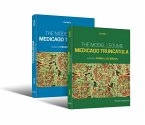
Metal transport in Medicago truncatula nodule rhizobia‐infected cells
Abstract
Symbiotic nitrogen fixation requires relatively large quantities of essential transition metals (iron, copper, zinc, etc.) as essential cofactors of many of the enzymes involved in this process. These nutrients are delivered by the host plant, in a complex process that requires soluble metal‐binding molecules and dedicated metal transporters. In the last years, the metal transporters responsible for iron, copper, zinc, and molybdate uptake by rhizobia‐infected cells in Medicago truncatula nodules have been identified, and the role that metal binding molecules such as citrate and nicotianamine play in symbiotic nitrogen fixation is gaining more attention. In this chapter, we will present the recent advances in this field and discuss the aspects of nodule transition metal homeostasis that still need addressing.

Functional genomics of symbiotic nitrogen fixation in legumes with a focus on transcription factors and membrane transporters
Abstract
Transcription factors (TFs), transcription regulators (TR), and membrane transporters are major determinants of nodule development and function. TFs and TRs control genetic reprogramming, and transporters facilitate exchange of nutrients between plant and rhizobia among other things. Here, we describe the strategy of reverse genetic screening in Medicago truncatula for genes from these two functional classes. We employed well-established transcriptomic resources (Medicago gene expression atlas), a spatially resolved nodule transcriptomic data set, and the tobacco retrotransposon Tnt1 insertion mutant population for systematic selection and functional analysis of candidate genes. We also re-annotated 417 nodule-induced TF and TR genes according to IMGAG3.5v4, which is the latest release of the Medicago genome. In total, we have targeted 21 nodule-enhanced TF and TR genes, and 20 nodule-enhanced transporter genes for characterization via insertional mutagenesis. In this chapter, we emphasize the importance of TFs, TRs, and transport proteins for symbiotic nitrogen fixation (SNF) and discuss the use of the Medicago Tnt1 mutant population for studies of gene function.
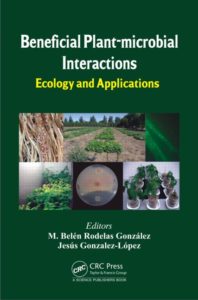
Metal transport in the Rhizobium-legume simbiosis
Abstract
Iron, zinc, copper, molybdenum and some other transition metals are essential nutrients (Fraustro da Silva and Williams 2001). They are constitutive elements of around half of the proteins of a typical cell (Andreini et al. 2008), where they may act as structural elements, such as zinc in the zinc finger domain, but mostly as key elements in the active site of enzymes involved in almost every physiological process, from oxidative respiration to photosynthesis. These elements are growth-limiting nutrients for autotrophic organisms, since they form ve1y stable complexes, resulting in low solubility and making their uptake difficult (Ruel and Bouis 1998, Fung et al. 2000, Grotz and Guerinot 2006). Moreover, living beings cannot accumulate high amounts of essential transition metals, since these elements can catalyze the production of free radicals in Fenton-style reactions or compete with other metals for the active site of metalloenzymes (Goldstein et al. 1993, Ranquet et al. 2007, Macomber and Imlay 2009). This is also the basis of the toxic effect of non-biogenic metals such as cadmium, lead or mercury.
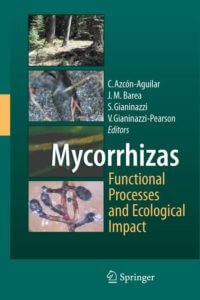
Heavy metal tolerance in arbuscular mycorrhizal fungi
Abstract
The current systems of food production used in Europe and North America have been hugely successful in increasing the yields of arable crops and in reducing the proportion of household budgets devoted to food. Despite this, intensive agricultural systems have had adverse effects on the environment, and the resulting diet has been linked to current health issues. Both the EU and the USA Government have subsidised production. The income derived from subsides has often exceeded that from farming. Such subsidies are unsustainable. Farming must become more market orientated. Past attempts have largely related to attempts to increase yields and reduce costs. The introduction of genetically modified crops is an example of this approach. An alternative has been to increase income from farming by producing products selling at a premium price. Recently, the public have come to question how food is produced and the consequences of particular methodologies. Questions related to the ethical values inherent in systems are increasingly raised. Future agriculture will be more eco-efficient. Against this background, the role of mycorrhizal fungi should be enhanced. These issues are examined here.
Mycorrhizal symbioses are central to the multitrophic interactions that impact plant productivity, competitiveness and survival. This book integrates present-day knowledge from well-known research groups on some of the topics which are at the forefront of mycorrhizal research. Topics include the cell programmes that drive mycorrhiza formation and function, the processes sustaining symbiotic mutualism, stress response mechanisms in mycorrhizal symbionts, and the diversity and ecological impacts of mycorrhizal systems. The efficient management of mycorrhizal systems has the potential to support the sustainable production of quality foods while ensuring environmental quality for future generations.
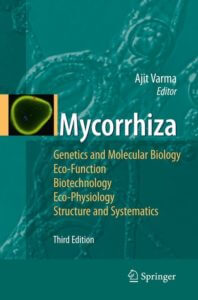
In vitro cultures: open new prospects for basic research in arbuscular mycorrhizas
Abstract
Mycorrhizas are symbioses between fungi and the roots of higher plants. As more than 90% of all known species of plants have the potential to form mycorrhizal associations, the productivity and species composition and the diversity of natural ecosystems are frequently dependent upon the presence and activity of mycorrhizas. The biotechnological application of mycorrhizas is expected to promote the production of food while maintaining ecologically and economically sustainable production systems.
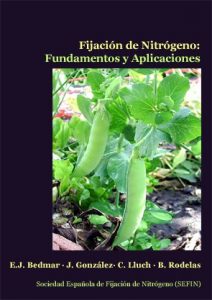
Establecimiento y función de las micorrizas arbusculares. In Fijación de Nitrógeno: Fundamentos y Aplicaciones
Abstract
Este libro aborda la fijación biológica del nitrógeno en vida libre y en simbiosis a través de las revisiones realizadas por los diferentes grupos de investigación que pertenecen a la SEFIN. Se ha estructurado en tres apartados diferenciados que recorren el proceso de fijación de nitrógeno en la biosfera, la interacción Rhizobium-leguminosa y la implicación ecológica y agronómica del proceso. En ellos se incluyen temas que describen la diversidad genómica y evolución de los endosimbiontes diazotrofos, la bioquímica y biología molecular de las enzimas implicadas, las señales e interacciónes entre microorganismos rizosféricos, el diálogo molecular entre simbiontes, el metabolismo carbonado, nitrogenado, oxidativo y hormonal del nódulo como órgano singular que se genera en la simbiosis. Además, se repasan las asociaciones endofíticas, actinorrícicas e incluso aquellas que se forman con hongos de la micorriza o con PGPRs, así como la producción de inoculantes bacterianos, fitorrecuperación de suelos y biodegradación, todos ellos implicados en Agricultura sostenible.

Genomics of arbuscular mycorrhizal fungi
Abstract
Arbuscular mycorrhizal fungi are soilborne microorganisms that form a mutualistic symbiotic association with most land plants. As obligate biotrophs these fungi are unable to complete their life cycle in the absence of the host plant. This symbiosis is increasingly being recognised as an integral and important part of natural ecosystems throughout the word. Because of the incalcitrance of arbuscular mycorrhizal fungi to grow in pure culture and consequently the difficulties in obtaining sufficiently large quantities of fungal material, the analysis of gene products has remained an extremely challenging but unexplored area. Until recently, little was known about the genomics of these fungi and it is only with the advent of powerful molecular techniques that it has been possible to venture research into their genetic makeup. This review surveys the most recent molecular genetics of arbuscular mycorrhizal fungi and their contributions to basic knowledge of the biology of this group of organisms.
